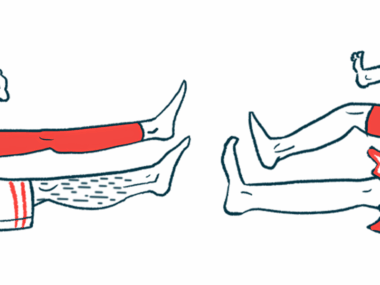Brain rewiring eases Parkinson’s symptoms before DBS is turned on
Microlesion effect may result from network's reorganization
Written by |

Changes in how regions of the brain interact with each other, which occur during the surgical procedure for deep brain stimulation (DBS), can temporarily ease motor symptoms of Parkinson’s disease, even before the electrical stimulation is turned on, a study finds.
The microlesion effect, as this temporary improvement is known, may result from changes to the way the brain’s movement-related network is organized. This network is a set of regions in the brain that work together as motor actions are planned and coordinated.
The study, “Reorganization of motor network in patients with Parkinson’s disease after deep brain stimulation,” was published in CNS Neuroscience & Therapeutics.
Motor symptoms of Parkinson’s, such as tremor and slowed movements, result from the brain’s loss of dopaminergic neurons, that is, nerve cells responsible for producing dopamine, a signaling chemical involved in motor control.
Understanding the microlesion effect
DBS involves a surgical procedure where one or more electrodes are implanted into the basal ganglia, a brain region that directs motor movements. A generator placed in the chest then sends electrical pulses to the electrodes to correct abnormal brain activity, easing motor symptoms. The pulse generator is usually not activated until a few weeks after the procedure, but some patients see a temporary improvement in motor symptoms that’s linked to better response upon electrical stimulation. How this happens is unclear, leading researchers in China to compare brain functional MRI scans of 49 people with Parkinson’s (mean age, 61.4), before and after their DBS surgical procedure, without activating the pulse generator.
A day after the procedure there was a reduction from 39.73 to 30.39 points in the average MDS Unified Parkinson’s Disease Rating Scale (MDS-UPDRS) part 3 scores, with lower scores indicating less severe motor symptoms.
Consistent with the transient nature of the microlesion effect, which “lasts several days to weeks,” the MDS-UPDRS scores returned to preoperative levels a month after the surgery, to an average 40.41 points.
To better understand the microlesion effect, the researchers focused on how different parts of the brain interacted and observed that regions involved in motor control didn’t interact as much after the procedure.
A reduction in functional connectivity, that is, how regions of the brain interact within a short period of time, occurred in the left middle temporal gyrus, bilateral middle frontal gyrus, right supplementary motor area, left precentral gyrus, left postcentral gyrus, left inferior frontal gyrus, and right superior frontal gyrus.
“The movement-related network was extensively reorganized during the microlesion period,” wrote the researchers, who said this may explain why motor symptoms ease temporarily after DBS.
Only changes in how the left postcentral gyrus and the right primary motor cortex interacted were linked to less severe motor symptoms, however. The postcentral gyrus is involved in proprioception, or awareness of where the body is and how it moves, whereas the primary motor cortex sends signals to muscles to make them move.
“The study provided new information on enhancing motor function from the network level,” the researchers said, noting that while medications were stopped within at least 12 hours of a MRI, accumulation of levodopa may act on functional connectivity, which may affect the findings.






